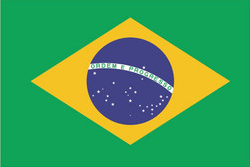 Satellite images analyzed and processed at the National Institute for Space Research (Instituto Nacional de Pesquisas Espaciais – Inpe) for assessing whether farmers of São Paulo state are replacing manual sugar cane harvest – and the consequent use of fire – for mechanization, as the Brazilian Environmental Protocol has established.
Satellite images analyzed and processed at the National Institute for Space Research (Instituto Nacional de Pesquisas Espaciais – Inpe) for assessing whether farmers of São Paulo state are replacing manual sugar cane harvest – and the consequent use of fire – for mechanization, as the Brazilian Environmental Protocol has established.
To release data on the type of harvest – with or without sugar cane burning – it is going to be launched a website of the “Satellite Monitoring of Sugar Cane Crop” project (Projeto Monitoramento da Colheita da Cana-de-açúcar via Imagens de Satélite).
The latest information on the 2011-2012 season show that mechanization has reached 65.2% of the crop in the state. This means that 4796140 hectares of harvested sugar cane in the last season, 3125619 hectares were harvested mechanically, while 1670521 hectares (34.8%) still has suffered from burns.
The drop in forest fires rates has significant impacts on the environment, reducing emissions, and in the population health, who suffers from the smoke in times of crop.
The State Department of Environment, the Sugar Cane Industry of São Paulo State Union (UNICA) and the supplier associations signed the Brazilian Environmental Protocol (Protocolo Agroambiental) to gradually reduce the practice of burning cane straw by growers in São Paulo. Inpe’s data, generated under CANASAT Project, allows checking whether the information provided by farmers to the environmental bodies is true. Thus, satellite images of the harvest period are analyzed to identify if there are signs of burning.
At the new website, the data are presented in charts that allow evaluating the situation in each county or region since 2006. Publications, papers that describe methodology and results obtained by CANASAT Project will also be available at the site.
Source: Inpe







